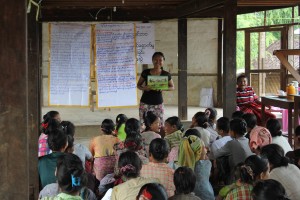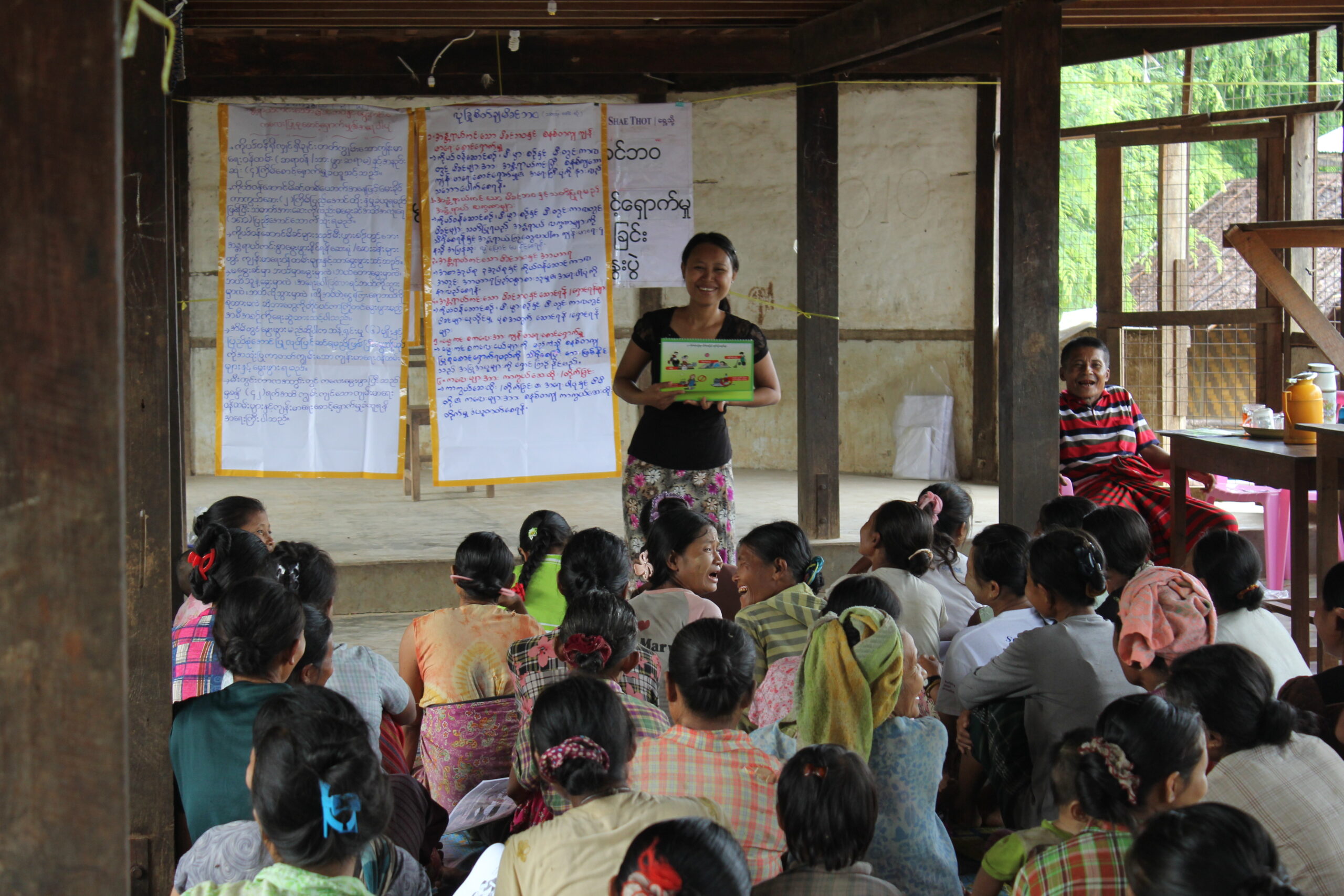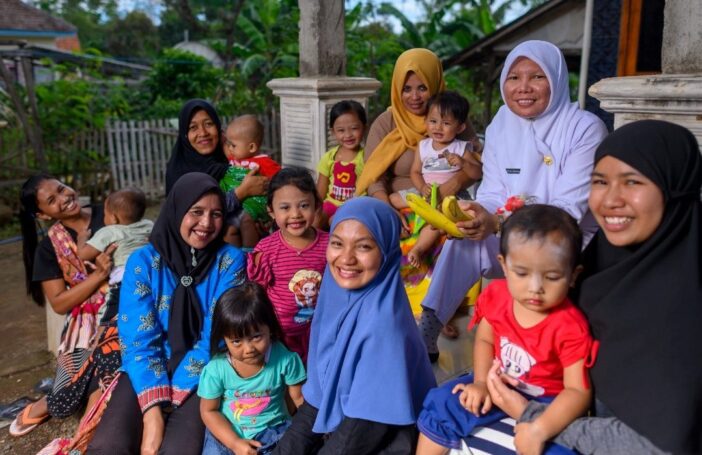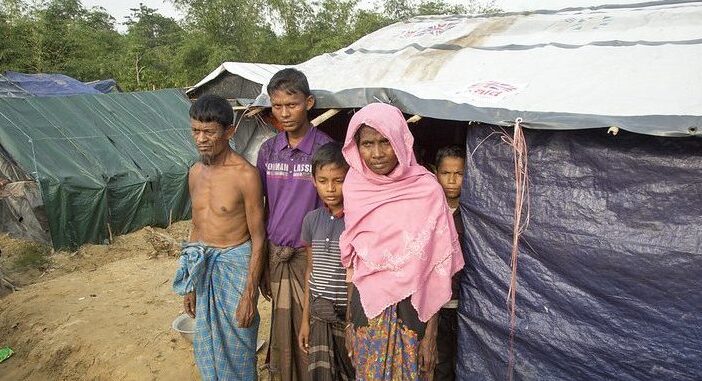 Inner reflections of context complexity – team dynamics
Inner reflections of context complexity – team dynamics
Part two of this series considered the importance of appropriate program approaches and meaningful adaptation to context. Part three, the final post in the series, considers the specific challenges of this in relation to staffing and measurement.
Staffing is a key aspect of conflict-sensitive practice when working in conflict-affected areas. One thread within the Pact approach and response to context has been to ensure that recruitment processes include a policy of reflecting local ethnic diversity. Most agencies also try to recruit local staff, although to ensure successful ‘Do No Harm’ requires deeper consideration than most are willing to give. Pact recruitment processes have attempted to reflect the diversity of the context, while actively modelling characteristics of inclusivity and working together across potential community divides to strengthen trust between groups. In other words, matching the profile of staff with the profile of the community. It also intentionally ensures that it does not reinforce centre-periphery relationships by placing solely Bamar (the dominant ethnic group in Myanmar) staff in hierarchically important positions. By trying to more thoughtfully link teams of staff to clusters of villages that ‘suit’ them, Pact’s approach has aimed to achieve a number of objectives, especially open, two-way communication between the project and the community. This is expected to reduce the likelihood of gatekeepers and minority groups from being excluded. It also demonstrates respect to the community. Finally, it is aimed at creating trust and strong relationships with the community and external stakeholders.
However, the staffing policy has unintentionally reflected a broader experience of the conflict as well. This means there are staff members who have experienced trauma and been involved in violence themselves, or been victims of it. The families of some have been forced to flee, while others are younger and have been spared any direct experience of the conflict. Diversity of ethnicity is also likely to reflect diversity of conflict experience. Those who have experienced conflict more directly are also likely to be more mature and empathetic with respect to understanding the experiences and issues affecting the communities. These staff are therefore usually more successful at engaging with the more complex communities, which raises interesting questions around ethics, such as where the boundaries are with respect to intentionally employing this experience. A conflict-affected staff also presents the issue for employers of the extent to which you have a duty of care to provide opportunities for tackling healing, should staff wish to take it up. Transparency within the team around the intentions and profiling, as well as deliberately employing a mentoring partnership between experienced conflict-affected staff and those less experienced has been a significant opportunity for staff to learn from each other, and share technical skills and approaches for building just with and within conflict-affected communities.
Reflecting diversity in staffing also raises dilemmas around general principles of the recruitment process. Meritocracy and an open competitive process are important, but what do you do if one candidate is best on merit but a second candidate is a better fit for team dynamics and diversity? The investment in capacity then comes into play, and the question is whether conflict environments require challenging the general principles. These are difficult competing tensions and issues to juggle, but the key aspect is to explore them with intentionality. Dilemmas include the necessity for speed in recruitment and trying to ensure program implementation keeps up versus respect and acknowledgement of the context. Pact hires double the amount of staff per village in Kayah compared to the iteration of the program in the Dry Zone of Myanmar because of the investment of time and the relationship-building needed for each community. While this requires a significant amount of resources, it means that generally both candidates of technical and contextual ability can be hired together, and work as a complimentary team.
The anecdotal evidence to date suggests strongly that the greater the intentionality with respect to matching profiles of staff with the profiles of communities in all respects (i.e., including those who have a deeper experience of conflict), the more likely the project will succeed. This may be self-evident, but the question is whether agencies actually implement this approach with purpose, and whether donors prioritise it.
Measuring trust, adaptation and process
Reflecting diversity of context in staffing is one thing, measuring a diversified program approach and the success of program adaptation to diversity is another. If responding to context means doing things differently at different speeds in different places, as Pact makes a good case for, measurement needs to reflect this. How can we measure the trust gained and the communities strengthened, and demonstrate that responding to community differences achieves better results than a blanket approach? This is an area where the sector needs to really advance.
It is not surprising that development and aid in Kayah should emphasise process and relational approaches as equally critical as the overt program objectives. However, the opaque nature of these secondary factors in conflict-affected environments needs to be brought to the fore and gain a place within the overt project objectives. Moreover, there must be a more thoughtful and appropriate psychosocial element developed within all projects that operate in conflict-affected environments. Overall, the benefits for communities of generating greater trust, cohesiveness and confidence is likely as important for well-being and empowerment as the other project benefits that are expected, and this needs to be captured.
These issues raise questions about the flexibility and understanding of donors with respect to program implementation and development in conflict-affected contexts, and the level of explicit purpose behind aid. To what extent are process, societal change and ostensibly secondary changes in relationships important to them? The linkages between achieving the primary objectives of aid programs and the processes, and, potentially more critical, results emerging through subtle relationship-based approaches deserve greater exploration and research.
Nuance, sensitivity and subtlety are not normally words that are easily associated with the humanitarian aid and development sector. The dominant aid methodology — of applying a linear model to change and the achievement of fixed objectives in a uniform way in any environment in a time-bound manner — does not lend itself to flexibility and complexity. It is hard enough for agencies to mainstream other dynamics, such as gender and conflict sensitivity, into programs in an effective manner; channelling social byproducts of integrated engagements takes this to the next level.
As this three part series has shown, responding to context, especially in contested environments, requires continuous learning, practical change at all levels of programming and recognition of the value of process. To support this type of thoughtful, societal healing approach requires donors and agencies to be more imaginative and demonstrate a long-term commitment to the context. They could start by learning from Pact’s work leading USAID/Burma’s Shae Thot program in Kayah.
Simon Richards is an independent consultant with over 20 years of experience working on a range of development and humanitarian programs. He is a specialist in conflict management and peacebuilding. He undertook the research for this three part series in close collaboration with staff of Pact Myanmar. The series explores the prevailing conditions and context in Kayah State, Myanmar and the rationale, learning and reflections emerging from Pact Myanmar’s implementation of an integrated development program, Shae Thot (the way forward in Myanmar), trying to address them. You can read part one of the series here and part two here. The contents of this blog series are the responsibility of the author and do not necessarily reflect the views of USAID or the United States Government.




